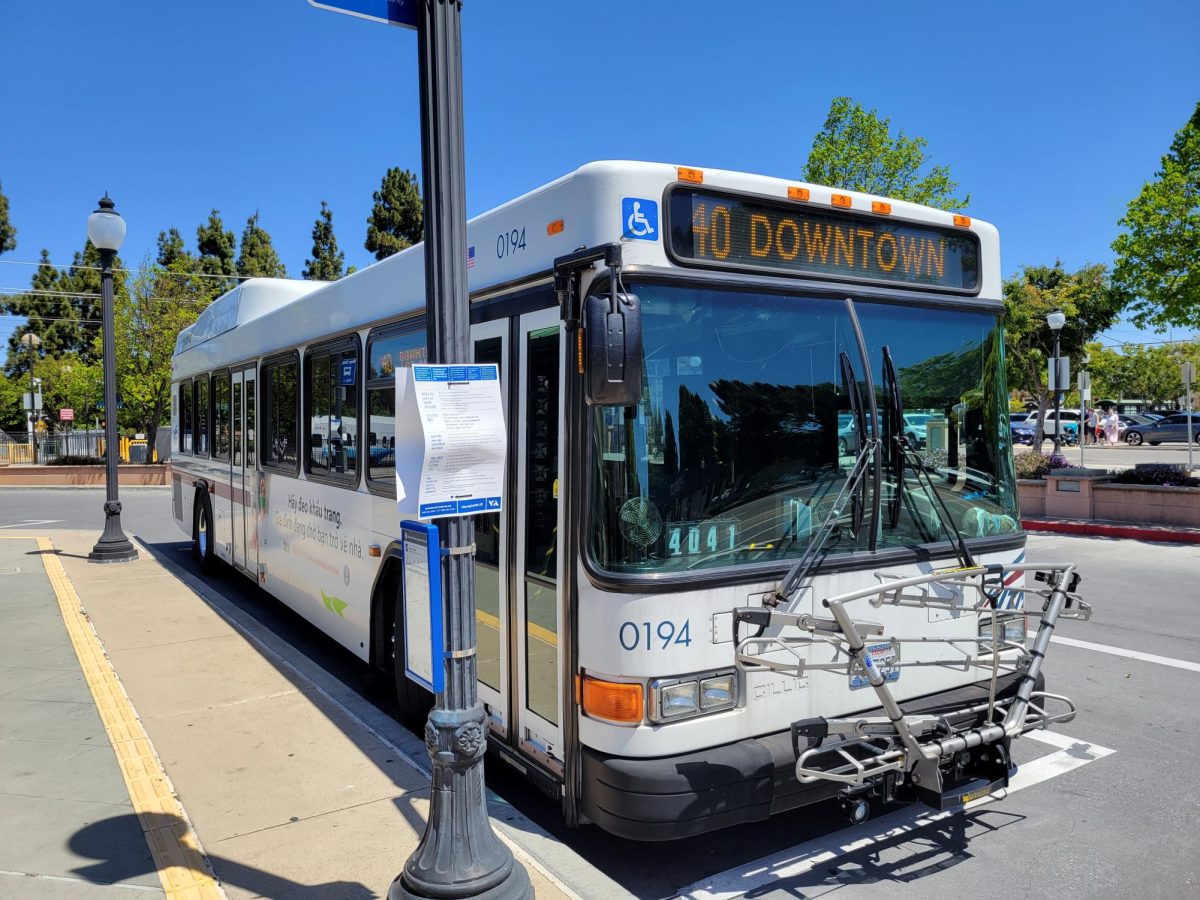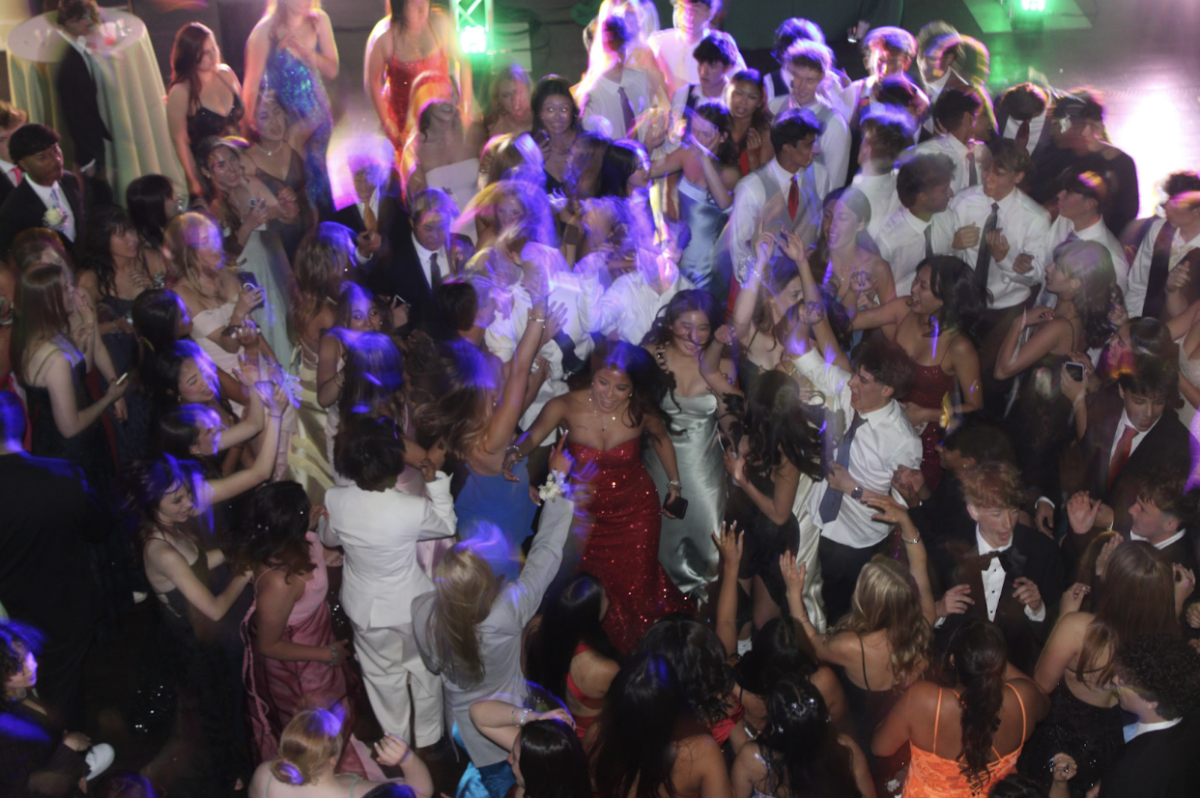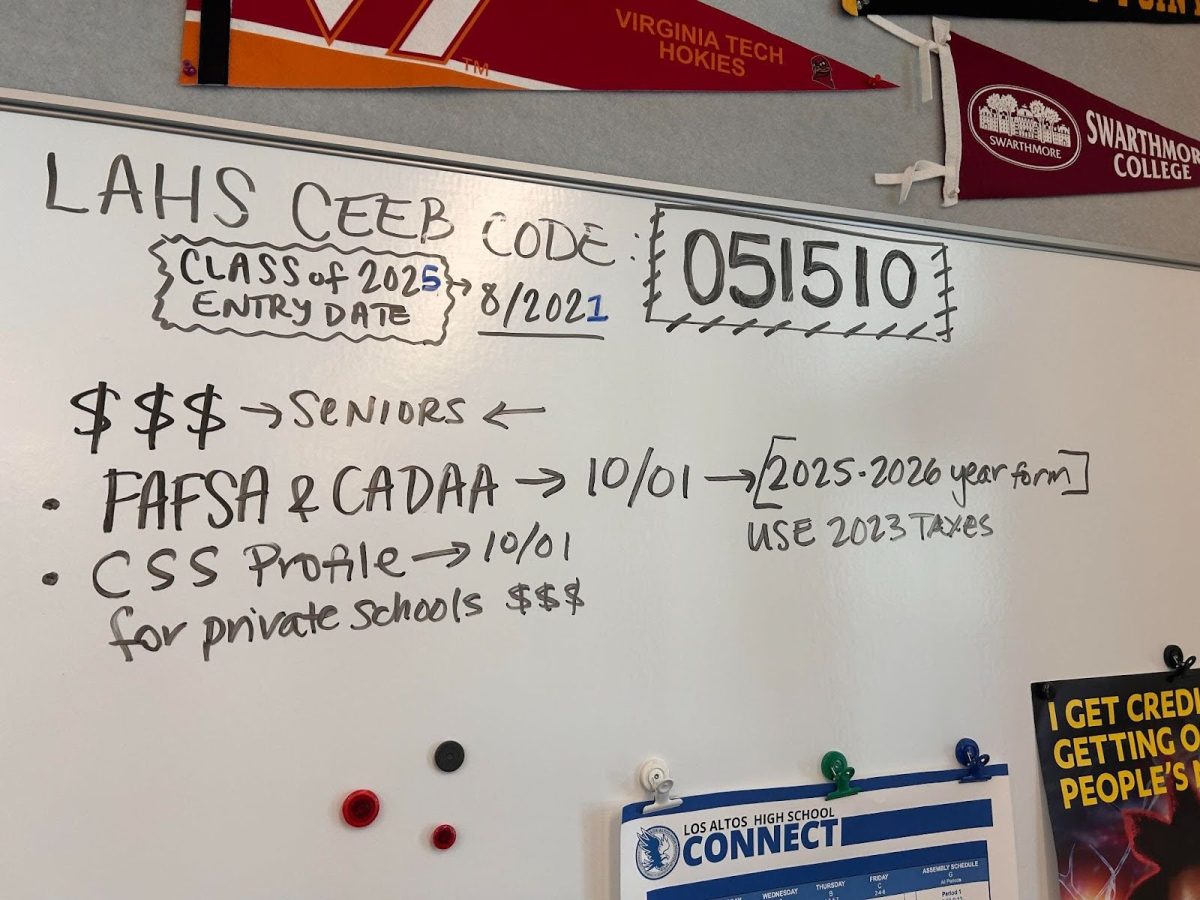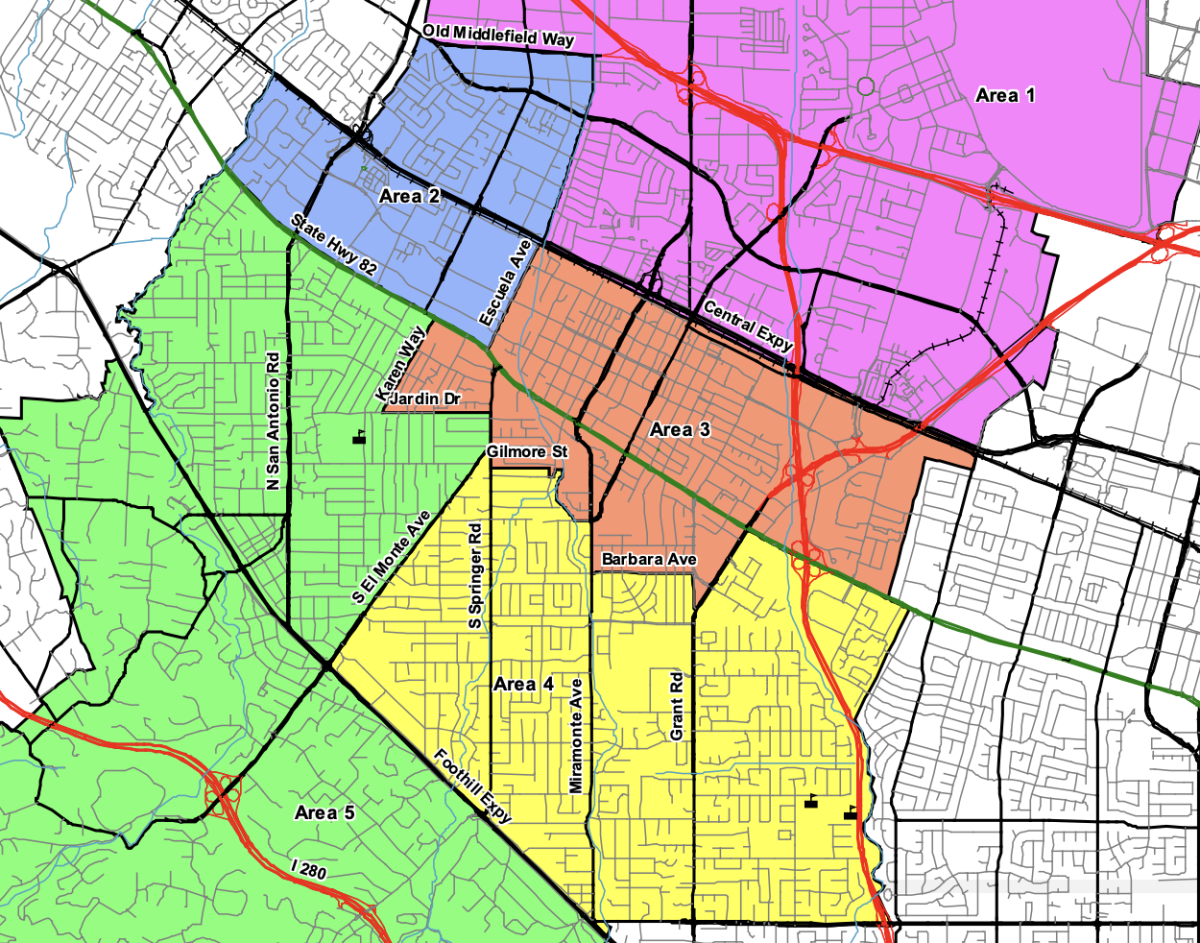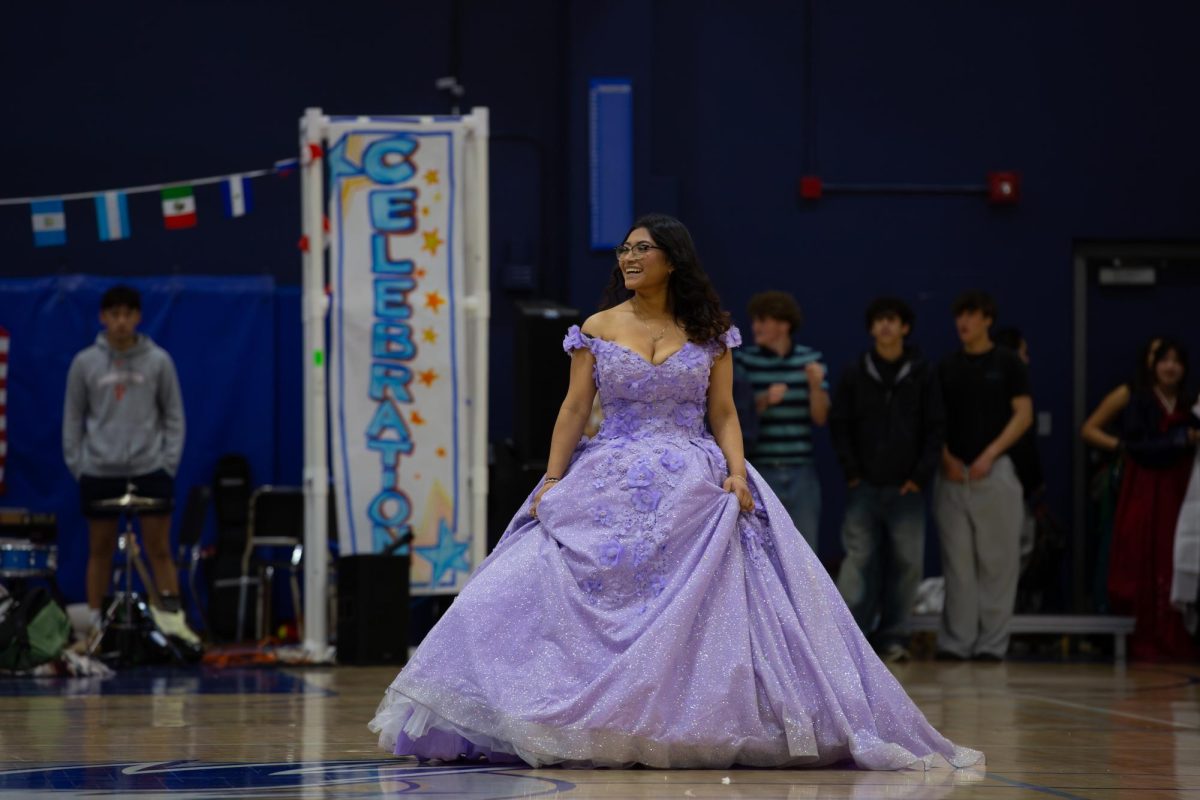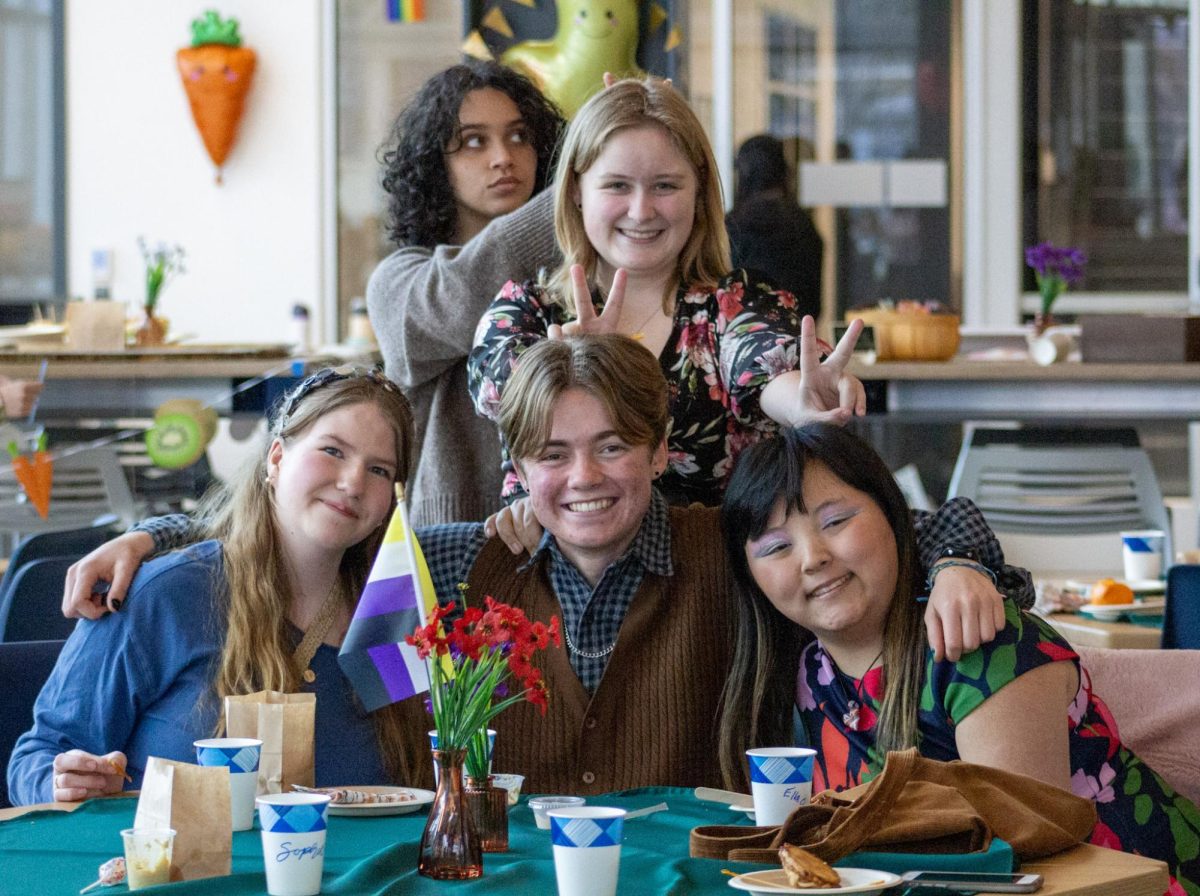Starting this school year, the school is hosting a new fifth period class for the MVHS Transition to Work program. The vocational program, a yearlong course designed to teach basic living skills to high school students with disabilities, was formerly a Foothill Community College program.
For the past decade, Transition to Work students split activities between the MVHS campus and the Veteran’s Affairs Palo Alto Health Care System (VAPAHCS) located in Palo Alto, where the students helped out in the cafeteria four times a week.
This year, the Foothill program was replaced with a new MVHS program of the same in an effort to widen the variety of facilities used and involve the students more in the district. This MVHS program does not include the VAPAHCS element and instead aims to use local school facilities like the Autoshop to teach a wider variety of living skills.
Autoshop teacher Greg Ely supervises the class, which contains seven students this year. Ely teaches the students basic living skills such as sweeping areas and maintaining vehicles while they are at LAHS. The students learn other skills such as washing and cooking skills at the MVHS location as well.
“The students have a special classroom over there at MVHS,” Ely said. “They learn really simple things… they have a stove, sink, washing machine, dryer and stuff so [the students] can learn things that we take for granted.You and I can sit there and wash some dishes and stuff like that, but to them, washing dishes is just a concept that’s beyond their imagination.”
The program also focuses on teaching students specific skills they will likely need later in life.
“When they get up into their early 20’s, they have to learn some basic things like washing their clothes, going shopping and how to use a bus,” Ely said. “[The program] takes them out on field trips all the time.”
At MVHS, the Transition to Work students are integrated into the rest of the student body. During brunch and lunch, the class goes out to interact with other students.
MVHS sophomore Dominique Lau interacts with the Transition to Work students on a daily basis. She is an officer of the MVHS Spartan Buddies Club, where members pair up with a special needs high school student and interact with their buddy through activities such as pumpkin decorating in the fall and ornament decorating in the winter.
“Last year I had a special needs student buddy who I saw on a daily basis at lunch,” Dominique said. “We would have conversations about almost everything, like what the weather was like or what was for lunch that day. My buddy loved trains so sometimes he brought train books so I could read them to him. This year I have a different buddy who is in a wheelchair and is mute. I am currently learning a special sign language so I can communicate with him.”
Dominique has a 21 year-old special needs sister who has played a role in Dominique’s involvement with the Transition to Work students. Even with this personal connection, Dominique emphasizes how much she has learned through seeing and interacting with the Transition to Work students.
“When I first saw the Transition to Work students at MVHS, I was a freshman, and I was surprised to see so many students with different disabilities, some in wheelchairs,” Dominique said. “I [began to realize that] MVHS was a really diverse environment more than before because of these students, especially during my freshman year when I developed my first impressions [of] high school.”
When interacting with Transition to Work students or special needs students in general, Dominique advises that high school students should just try to treat them just like other students.
“The most important thing for LAHS students to keep in mind when interacting with Transition to Work students is to be understanding,” Dominique said. “Transition to Work students may not live the generic high school life as others do. [But] they are in fact students, just like any other high schooler. It would be great if students could treat Transition to Work students like any other ordinary student.”
However, since Transition to Work students at the Autoshop are only present during fifth period, they are limited in socialization opportunities with other LAHS students.
Despite this limitation, Ely believes the same kind of integration is possible with the LAHS student body and wants to have the class eventually participate in some of LAHS’ school activities and assemblies within the next school year. Because the Transition to Work schedule is very flexible, the class is available to participate in schoolwide activities such as assemblies if invitations from LAHS are extended. This has not happened yet, as the class just began using LAHS as a facility this year. Social interaction and more exposure to the outside world are the major aspects of learning that the class has and is looking to expand upon.
“When [the Transition to Work students] first came here, I took them for a tour around the school and took them up to the office,” Ely said. “During Homecoming we walked around the campus and they just thought [the decorations were] the greatest. So you know its very, very simple things that these students enjoy because you’re stimulating them into seeing what else is out there in the world.”
Ely has personal experience working with special needs students and family members, as his sister was born paralyzed from the legs up. Now in her late 40s, she has learned to adapt to her physical disability. Ely credits his open-mindedness in part to witnessing his sister’s experiences.
“It is important for LAHS students and the community to realize that there are other kids in our schools that have difficulties or limitations in what they can learn and do,” Ely said. “Not everybody…can communicate or have good social skills. Some of the kids have autism; some of them have physical issues. One of the kids [that] I teach [is] technically legally blind- his field of vision looks like frosted glass all the time. The only time that he can see clearly is when he gets the object up within two inches of his eye. He’s extremely brilliant and bilingual and helps one of the other kids [who doesn’t speak English] who is very low- functioning.”
With diversity being a central aspect of the schools’ core values, Ely believes that physical and mental diversity should also be brought to the student body’s attention.
“There are kids that have physical limitations and mental limitations and that’s what we’ve got to understand if they want diversity in this high school,” Ely said. “You can have cultural diversity, but how about physical and mental diversity?”
Programs like Transition to Work are also vital to families who cannot afford private schools or separate programs for their children. Public school programs like Transition to Work help all families regardless of financial situation to secure a future for their children.
“Everybody needs a chance,” Ely said. “Every one of them needs a chance at having a better life than what they had to start out with. All kids should have a right to learn.”
Ely encourages LAHS students to stop by the Autoshop during fifth period if they have a free period to greet the Transition to Work students.
“Come and support the kids,” Ely said. “Come down and meet them, and then you’ll find out how nice they really are.”
Story continues below advertisement



